Getting ready to board your flight can be a stressful experience, especially if you are traveling with kids! Rules are often changing, and different airlines have different policies. It can be a real quagmire.
However, the good news is for almost all flights, the rules around tablets, phones, and other small electronics tend to be the same.
So What do you need to know about travelling with your tablet? What conditions should your tablet comply with before you travel with them? What do you have to leave behind or carry in your travel luggage?
Can You Use a Tablet on a Plane?
Yes, you can carry tablets, mobiles, laptops, and other electronic devices on an airplane in your carry-on luggage. A general rule is that they must be in Airplane mode for take-off and landing, but outside of these periods, they can be used in full.
However, be sure to listen to the crew while on board. If there are any additional instructions you need to know, they will announce them before taking off.
Traveling with Your Cell Phones, IPads, or Tablets
Before You Leave for the Airport
One thing to remember to do before you head off is charge them, especially if you use mobile boarding passes. Also, remember that budget airlines often don’t have charging facilities onboard, so either recharge before boarding or use the battery sparingly.
Another thing to consider before flying is downloading content. You can load up your cell phones, iPods, and tablets with new songs, applications, and games to keep you busy as you may stay offline through your journey. While many flights have WiFi available, many still don’t, so planning ahead is great.
Most streaming services offer a download feature, and having a few things available while not connected can help relieve boredom or stress from not enjoying flying. Again, especially if you are flying with toddlers.
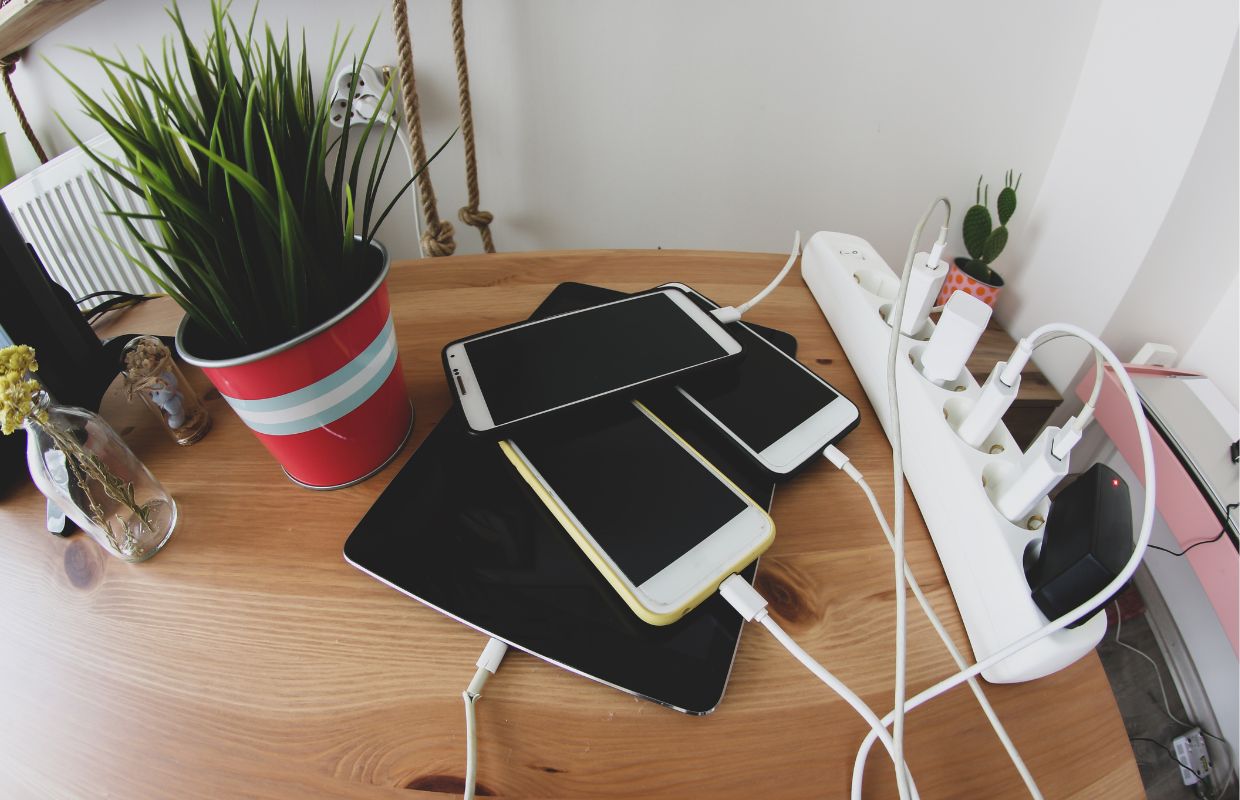
I’d also recommend downloading the app of your flight carrier. Aside from digital boarding passes, most airline apps also give you helpful updates and notifications about flight status changes and boarding information.
Something else to consider when packing is that devices using a lithium-ion battery, such as Kindles or portable chargers, cant be packed in your checked case. They must be in your carry-on as they pose a fire risk.
I can attest to this from personal experience. I started smelling a burning smell on one flight from London to Chicago. I did what anyone else would do, quietly panicked on the inside, looked if the engines were on fire, then wondered if anyone else smelt it.
As the smell spread through the rows around me, more and more people showed that same panicked look we all tried our best to suppress. We alerted the flight attendant who they disappeared . . . quickly.
After a few minutes of trying not to have a heart attack, she returned and said there had been a small fire in the hold due to a battery, but it was out now, and there was no need to worry.
I think that was one of the happiest moments of my life right there, finding out the plane wasn’t on fire!
So please don’t put anyone else through that, and keep your batteries on you!
At the Airport
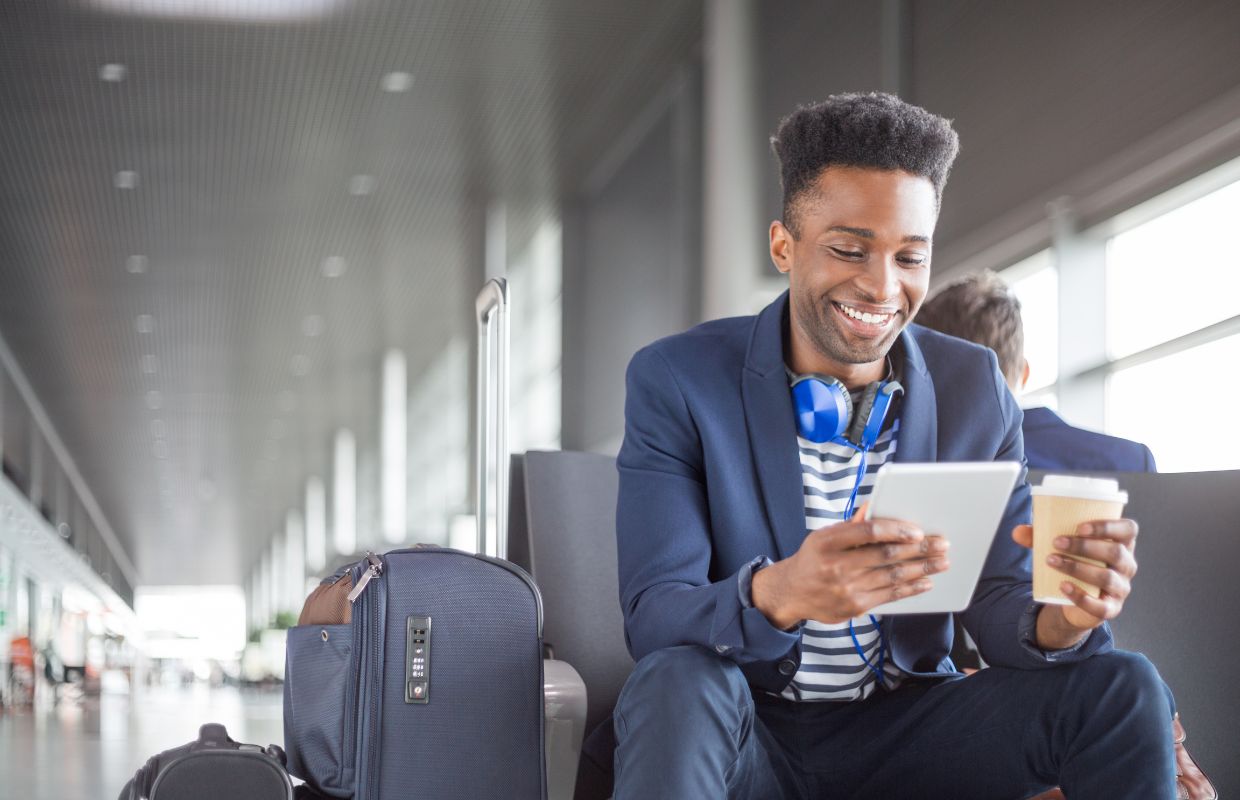
Come to the airport prepared. For example, if you take a tablet or cell phone, take its USB cable and adapter in your carry-on luggage. It’s great to have it handy for a pre-flight battery boost; most airports have plenty of free gadget charging stations.
Use travel apps to organize yourself and familiarize yourself with your airport travel details. One widespread travel application in use is the Calendar app. The application can be used to keep all your travel details, including scheduled take-off and landing.
At the Security Checkpoint
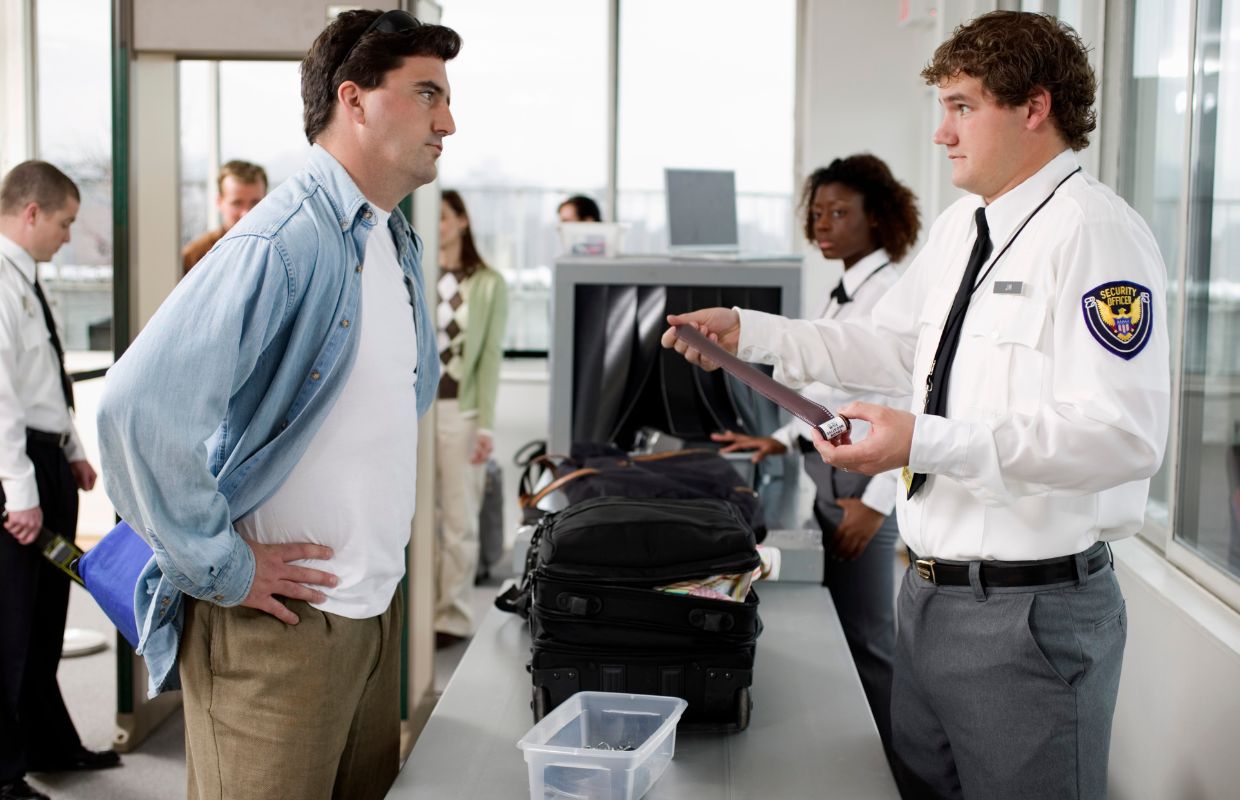
When you pass through security, you must remove all electronics from your bag, so it is wise to consider this when packing.
Electronics will need to go in their own separate container to your bag. Having them ready can help get through quickly and smoothly and not end up being that guy.
Remember to also take off extra coats, wristwatches, keys, tablets, laptop computers, and iPads, if you have any, away for separate screening.
To reiterate the importance of having your device charged, one thing to bear in mind is that they can ask you to turn your laptop on to check it is legit; if you have no battery, it could be a problem. However, this is very rare, but something to be aware of.
On Flight
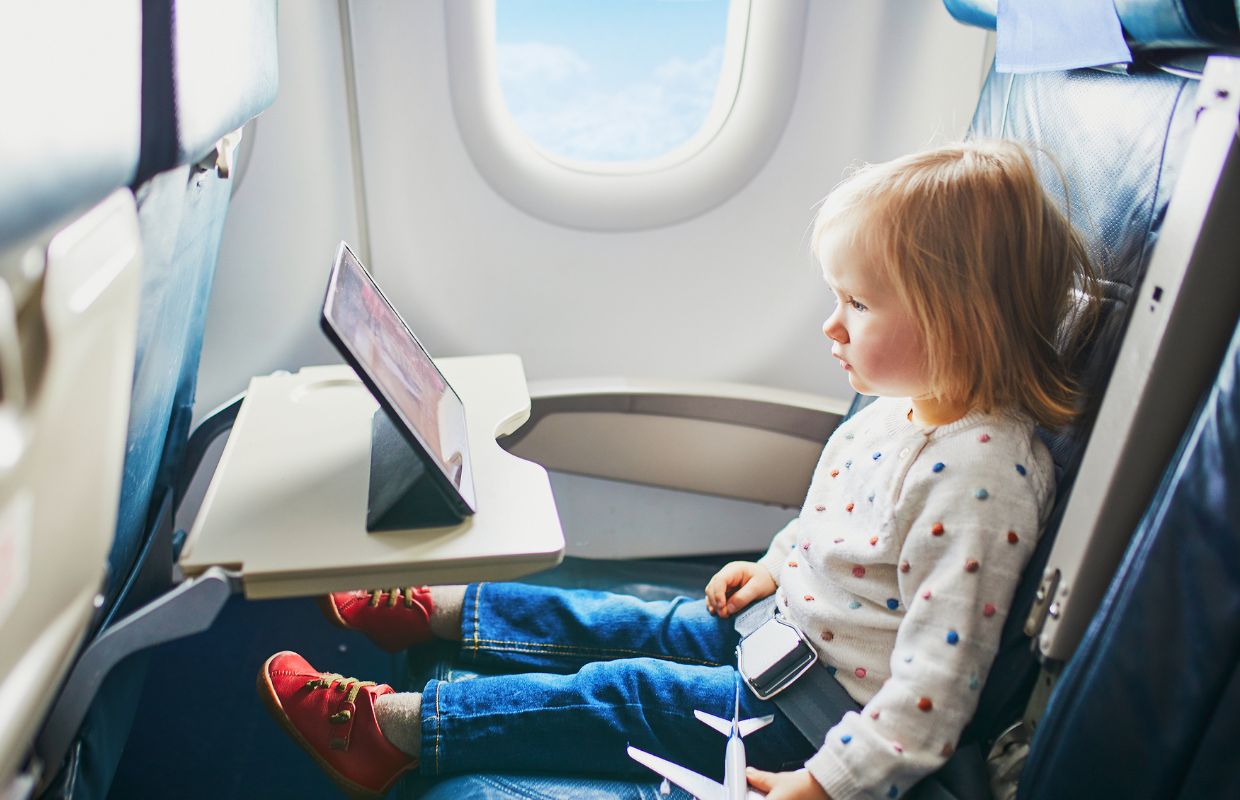
With the evolution of technology in the 21st century, airline rules keep changing, so if you are unsure, just check with the cabin crew about what you can and can’t do.
The flight crew will direct you on using your mobile devices, iPads, or tablets while flying. Please take note of their usage during take-off, landings, or on air. They will also tell you when to switch on or off your device (The direction is usually given before the take-off or landing), Turn off or put on airplane mode, and connect to mobile data networks or available wireless networks such as WiFi.
To ensure travelers are comfortable, some airlines do provide onboard WiFi so travelers can access the internet in the air. You only have to turn on the WiFi connection after you enable flight mode.
Something else to also consider is that if you misplace or drop one of your devices in the aircraft and it is beyond your reach, ask the nearest flight attendant for help. Do not try to mess with the seat or remove cushions to find it. You may put yourself in danger when you do or dislodge safety equipment.
At Your Destination
As you arrive at your destination airport, turn off your cell phone, iPad, or tablet’s airplane mode, reconnect and let your loved ones know you are safe.
You may also want to set your device to the new time zone. Sometimes, some tablets reset their time zone automatically. However, if your device does not automate it, check the settings app to update the date and time settings. You have to be up-to-date with your schedules in the new place.
Policies Guiding the Use of Electronic Devices
Though airlines now allow travelers to take tablets or other devices for personal use on flights, there are still policies that guide the use and carriage of these devices. Aviation organizations operating within the confines of the United States government operate with these guidelines:
Travelers may use their devices 1000fts or more above sea level, except if a flight officer announces otherwise.
Passengers may use all portable electronic devices allowed in the United States and other locations unless in cases where the location does not permit the use of the devices. Fortunately, most places have similar rules as the united state government.
Passengers may only carry lightweight electronic devices after disabling cellular networks.
Aviation organizations are big on keeping order, and if you break the rules, there are pretty strict punishments as some electronic devices can cause interruption of aircraft navigation instruments. Sometimes, you may be required to turn off your devices in emergencies.
As a passenger, you can only use cellular services when the main cabin door is open or if a flight attendant gives you the go-ahead.
What Electronic Devices Can You Take on a Plane?
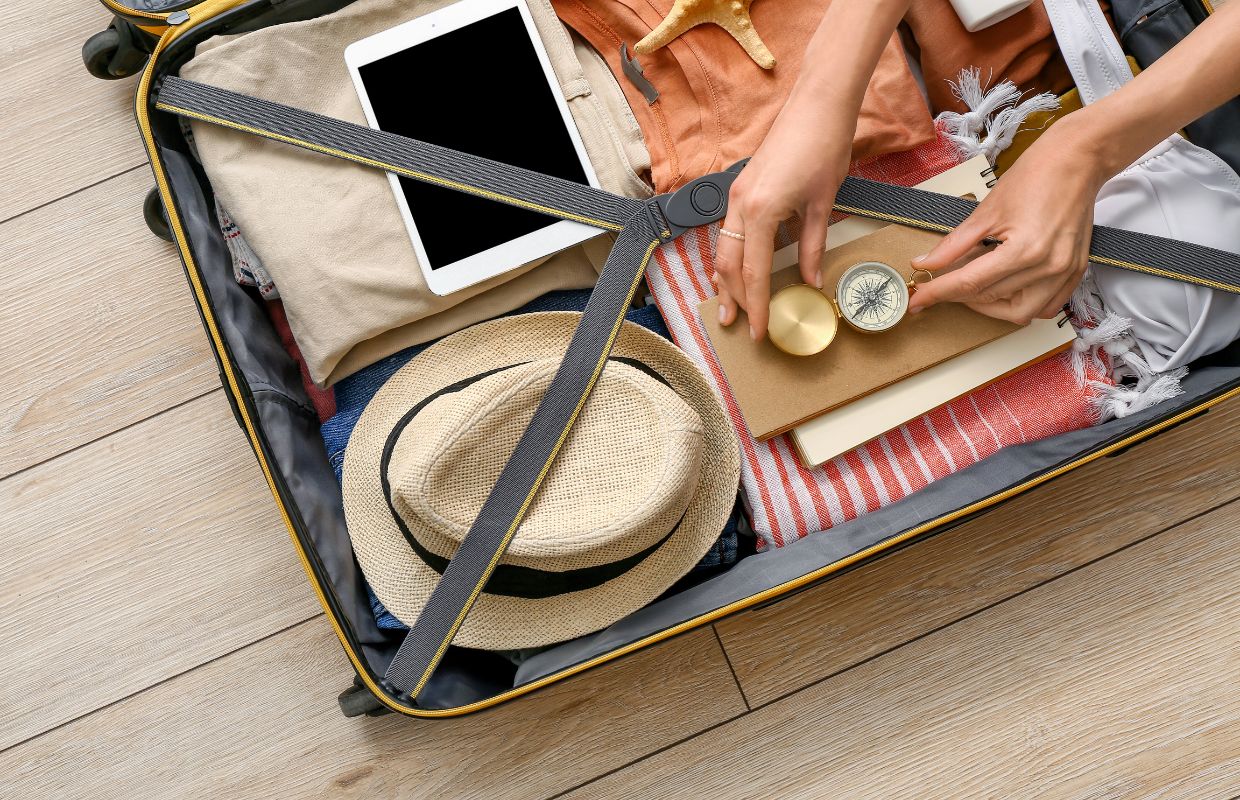
Now, an airline may allow passengers to carry portable personal electronic devices. Passengers can have these devices in either their carry-on or checked baggage, except they are exceptions to where they can keep some devices.
The personal electronic devices that contain batteries should be in your carry-on. Most airlines allow but are not limited to the following devices: cell phones and smartphones (iPad, tablet), laptops, spare batteries (laptop batteries, camera batteries, dry cell batteries, lithium metal/lithium-ion batteries), wristwatches, cameras, calculators, music players, camcorders or audio recorders, shavers and so on. Also, take headphones, ear pods, and listening devices you may need to listen to music.
An airline usually does not allow a traveler to use the charging port in the aircraft to charge their tablet or iPad. Most aircraft’s power outlets allow the maximum voltage of 50-75 volts when the airline permits. That is not good for your battery health. Therefore, you have to maintain the battery health of your device at all times.
What Electronic Devices Are Not Allowed on a Plane?
The TSA website gives guidelines for taking portable electronic devices, mobile devices, and other electronics on a plane. However, you must understand the concept of these guidelines, so you don’t go against the United States government by carrying contrabands on the aircraft.
Airlines permit passengers to carry portable electronic devices because they fit the criteria of electronics a person can take. However, larger electronic devices and smaller but non-essential devices are not allowed in the aircraft.
Generally, the devices that are not allowed include, but do check with your specific airline as there may be some variance:
- E-cigarettes and vaporizers
- all personal humidifiers: battery-operated humidifier or plug-in device
- Remote-control and large toys
- TVs
- Hoverboards
- Electric heating devices like curling irons, hair dryers, bottle warmers, pressing irons, etc.
- Powered air-purifying respirators
- Radio receivers and transmitters.
Nevertheless, travelers can take along devices that are important for their health. Pacemakers, hearing aids, and other medical assistive devices are permitted on flight regardless of size. However, the smaller the device is, the better. You may want to go through the special travel needs section of the airline to get more information about these devices.
If you must carry e-cigarettes or vaporizers, check with the flight attendant if it is okay to take them. Do not put these devices in the checked baggage. Instead, carry them with you, or keep them in your carry-on luggage. You cannot use or charge these devices in the airport or aircraft as it is not permitted. You may attract legal action for going against the rules. To be on the safer side, never travel with vape devices.
Frequently Asked Questions
How many devices can I travel with?
For portable electronic devices, there’s no limit to the quantity. You can take as many cell phones, smartphones, tablets, iPods, mobile phones, iPad pro, or laptops as you want to, provided the airline permits you to do so. Also, you want to ensure you do not take more devices than you need on your journey, making them prone to theft or damage. Also, they may get missing if you have to use a connecting flight at some point. The best advice is to take devices you can care for closely on the flight. Never forget to enable airplane mode on all mobile devices you take with you.
Do I need to take out my tablet or iPad at the security checkpoint for additional screening?
In some airports, tablets and iPads do not need additional screening before you take them as part of your hand luggage. However, in most airports, the TSA officer on duty may require additional screening for other electronics like tablets, iPads, or laptops, which are larger than mobile phones or cell phones. Some airports may require you to put laptops and sometimes tablets or iPads in a separate bin for X-ray screening.
How can I keep my tablet/iPad safe while traveling?
The best way to keep your tablets or iPads safe is by carrying them in your hand luggage. When you don’t have protective cases and have to keep them in the checked baggage, wrap them in soft cotton clothes and keep them in a safe portion of your checked luggage, so they don’t get damaged when someone mishandles them.
An iPad is more fragile than the average tablet, so iPads need more protection. Tablet bags or a tablet sleeve may be an option for a tablet but a necessity for an iPad if you want to keep the screen safe. These tablet sleeves and bags are available in different sizes, so you should choose the right bag for your tablet and iPad, even if you want to carry them in carry-on baggage. Turn on the airplane mode of the tablet before the flight if you won’t switch the device off.
Final thoughts
While you may take an iPad or tablet on a plane, you must ensure that your iPad or tablet complies with the rules of the plane. The rules may differ for the different planes or airlines, yet, it is in your best interest to avoid problems.
So sensitive information never gets into the wrong hands from your end, do away with a regular work tablet or iPad. Instead, get travel tablets to keep you busy and entertained while flying.
Sometimes, you may not need to travel on the plane with different devices, tablets, laptops, or iPads. Reading a book will do better. You will also get the chance to rest your eyes from looking at your tablet’s screen often. Reading books will help you save your batteries too.
Safe travels on your journey around the world.










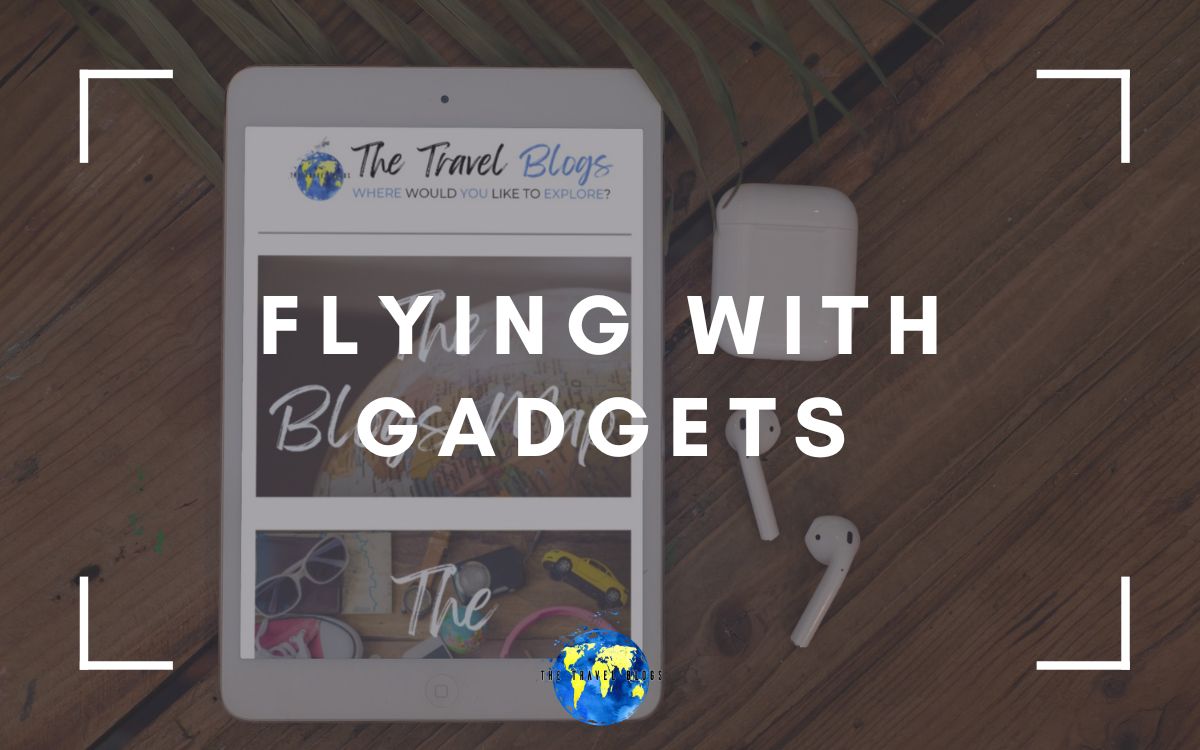

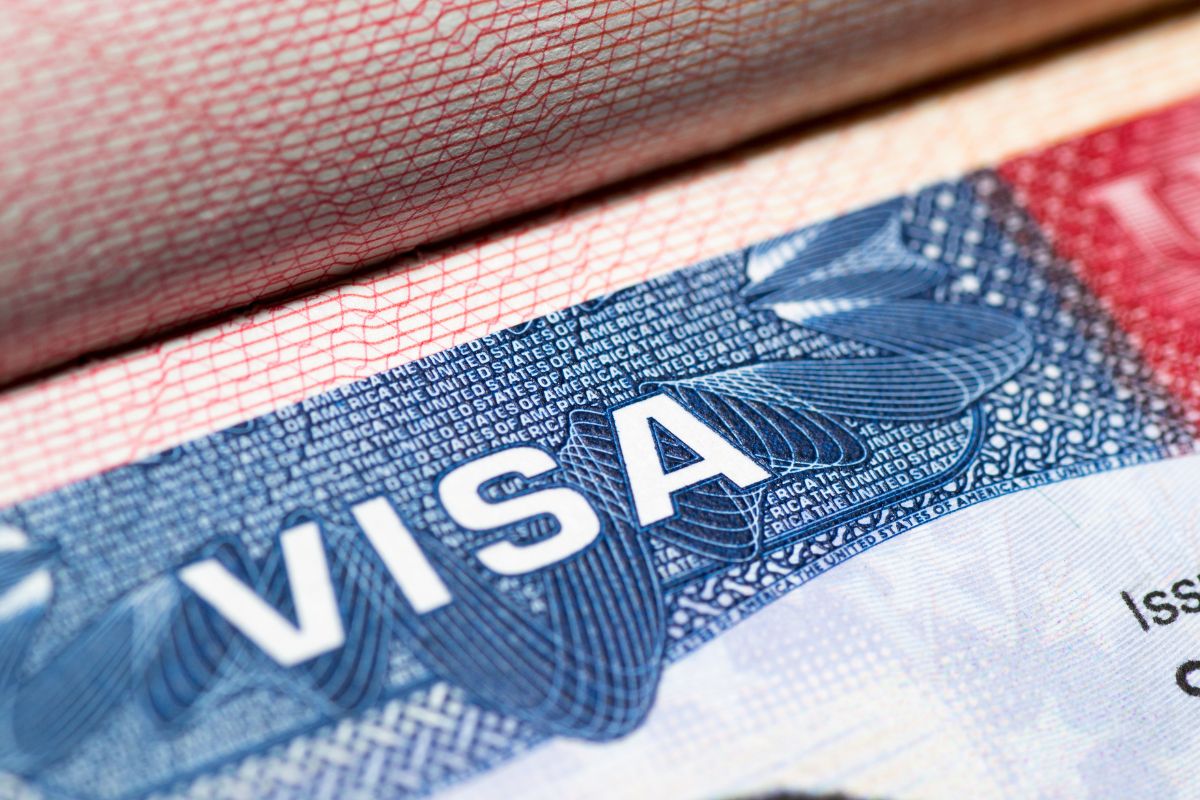







Discussion about this post